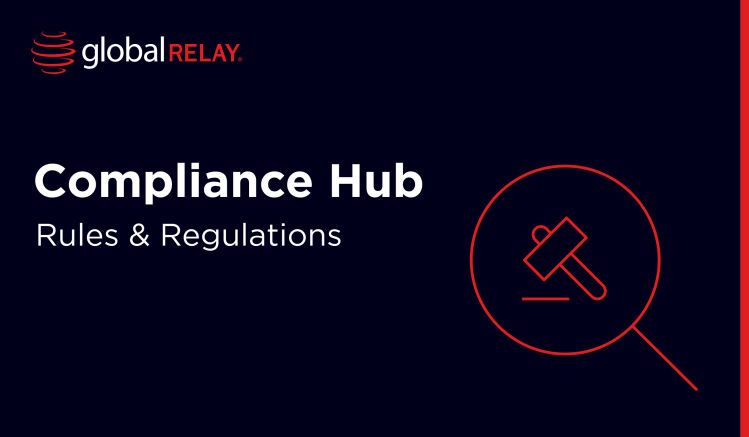
SEC leadership outlines a pivoting path of regulation and enforcement
At an SEC event, several Commission leaders shared their views on altering regulation going forward, with focuses on pro-innovation policies, crypto rulemaking, and reduction of the regulatory burden. What does this move toward deregulation mean for firms?
Written by a human
In brief:
- SEC Chairman Paul Atkins, along with two other Commissioners, commended the SEC’s shifting vision and the return to its “core mission”
- On the other hand, Commissioner Caroline Crenshaw voiced concerns about the implications that the rollback of established guidelines could have
- These movements imply an era of deregulation that is forthcoming, which raises questions about market stability, institutional integrity, investor protection, and regulatory insight
On May 20, the Securities and Exchange Commission’s (SEC) Chairman Paul Atkins, as well as Commissioners Hester Pierce, Mark Uyeda, and Caroline Crenshaw, spoke to investors about the direction of the agency at an SEC Speaks event, highlighting contrasting opinions about its trajectory for the future.
A new day, a reinterpreted “core mission” for the SEC
Chairman Atkins promised a return to the SEC’s “core mission” of protecting investors, facilitating capital formation, and maintaining fair and effective markets. Specifically, this repositioning is aimed at fully embracing innovation, promoting competition, stripping back prescriptive rulemaking, and encouraging investment:
“It is a new day at the SEC. As I begin my tenure as Chairman, I can tell you that we are getting back to our roots of promoting, rather than stifling, innovation.”
With a new administration at the top, the SEC has flipped the switch on a range of policies – particularly in bolstering the use of emerging technologies like artificial intelligence (AI) and crypto. Underscoring this, Atkins praised the Crypto Task Force’s efforts to conduct roundtables that discuss crypto asset regulation as it relates to topics like security status, trading platforms, and custody.
Beyond crypto governance, Atkins announced plans to disband the Office of the Strategic Hub for Innovation and Financial Technology (FinHub). Instead, he plans to integrate its functions into other parts of the agency to “ingrain [innovation] in the culture SEC-wide.”. He also aims to undergo several internal reforms to optimize efficiency, such as reassessing staffing capacity and reviewing technological infrastructure.
Regulatory Jenga or North Star?
Commissioner Uyeda championed the SEC’s new agenda and the “move away from regulation by enforcement,” stating that policymaking should be steady and predictable to accord with historical mandates and enhance regulatory credibility.
Further, he said that the Commission’s past efforts to build governance around social and environmental causes like climate-related disclosures have been unnecessary, instead pushing for an increasing focus on new technologies:
“The Commission has undergone a major course-correction. Instead of tackling various perceived social ills…the SEC has returned to its core mission of regulating the capital markets…The quality of regulation is vastly improved when the Commission engages with the public—especially when it comes to new technologies and services.”
Commissioner Pierce advocated for a more principles-based framework around crypto as opposed to an overreliance on enforcement to regulate digital assets. Also supporting a pro-innovation approach, Pierce expressed that the regulator needs to move forward with humility and adaptability in governing the fast-paced crypto industry.
Likewise, she spoke to the Crypto Task Force’s aim in defining crypto assets under securities law and shared insight on the current regulatory view:
“The most popular topic of discussion by far in written input and industry meetings has been security status. My short answer to the question—Are crypto assets securities? —is that most currently existing crypto assets in the market are not.”
While Commissioners Pierce and Uyeda were the dissenting voices of SEC governance in years past, Commissioner Crenshaw has now traded places on the opposite side of the fence. Crenshaw compared these regulatory changes to a game of Jenga, stating that the agency is comprised of interrelated rules and regulations that oversee an increasingly complex market.
She opined that with the removal of each metaphorical block – representing SEC Staff, institutional integrity, due process, and failure to enforce necessary laws – the “regulatory tower” could be in danger:
“How many blocks can you pull before the tower gives way? When it comes to the stability of our markets, how far are we willing to take our dangerous game? Who would ultimately be the loser when the foundation gives way?”
Change across the regulatory gamut
It’s not only the SEC shifting regulatory priorities – new administration at other regulatory bodies such as the Commodity Futures Trading Commission (CFTC), Department of Justice (DOJ), and Financial Conduct Authority (FCA) have signaled a reversal in approach.
Mirroring the SEC, the CFTC has made moves towards more flexible and pro-innovative oversight by reviewing stances on digital asset regulation and streamlining enforcement processes. Acting Chair Caroline Pham has denounced the CFTC’s previous strategy, stating it would no longer be taking a “regulation by enforcement” view.
Likewise, we’ve seen similar actions at the DOJ, such as through its decisions to scale back on crypto prosecution and white-collar enforcement to simplify investigations and reduce the regulatory burden. Even on a transatlantic level, the FCA has made a move to adopt a new five-year strategy to encourage competition and support growth by reducing the regulatory burden.
What does the SEC’s new tone mean for the industry?
In his conclusion, Atkins stated that it is a “new day” for the SEC, and that the Commission’s administration will work to create an environment that “bolsters the economy and builds on U.S. leadership of global markets.”
So, what does this mean for the industry, and how should compliance teams react? Ryan Sheridan, Global Relay’s senior manager of regulatory intelligence, weighed in with his thoughts:
I think the reality is that even though the SEC may be taking a more business friendly approach, administrations change, and compliance programs should remain vigilant and not change their posture. It takes a long time and a lot of effort to build a robust governance structure, and it’s wise to maintain that to protect the franchise and root out bad actors.
While regulators are committing to a less prescriptive enforcement environment, it’s just as critical for firms to preserve the core principles of compliance. Compliance teams must ensure they’re continuing to maintain sound internal processes, documentation, and risk management policies to stay agile in a modernizing and advancing financial environment.
Though regulators plan to take a more hands-off approach going forward, firms must hold fast in their commitment to compliance. Data retention and oversight are the heart of all operation needs, underscoring the criticality of carefully preserved recordkeeping and monitoring processes.



